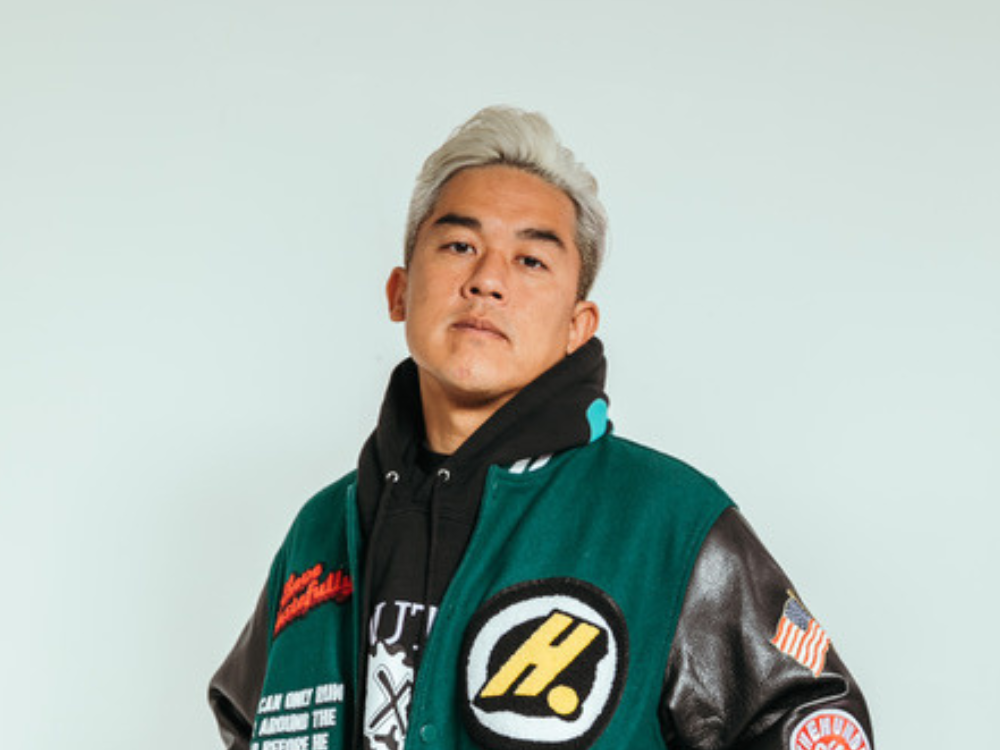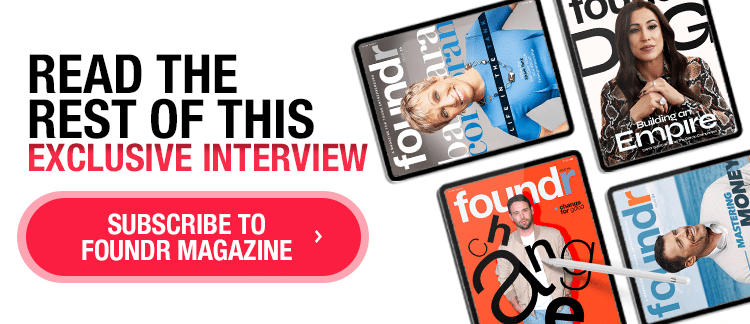Foundr Magazine publishes in-depth interviews with the world’s greatest entrepreneurs. Our articles highlight key takeaways from each month’s cover feature. We talked with streetwear icon Bobby Hundreds about con the fear of NFTs and building a healthy brand culture. To read more, subscribe to the magazine.
—————
It began with a young man writing about what fascinated him: fashion. Bobby Kim (known by the extensive fan base of his company, The Hundreds, as Bobby Hundreds) admired Stussy, Mossimo, and XLARGE. But he also had an inner urge to bring something new to the table.
That “new” was vulnerable authenticity on display while building a community one relationship at a time.
Kim began writing a blog at a time when blogs themselves were new. He shared his thoughts about those other brands and then, after meeting Ben Shenassafar in law school, launched his own brand: The Hundreds.
Nearly two decades later, he sits atop a multimillion-dollar empire that includes not only a popular blog, a magazine, restaurant ventures, filmmaking, memoir writing, a menswear line, and a womenswear line but also an expansive library of NFTs. Kim sat down with us to do what he does best: open up.
NFTs and the Metaverse
After making waves in 2019 with the launch of his memoir, This Is Not a T-Shirt, Kim has recently kept the surf roiling with his entree into the NFT and metaverse space.
“My role has been one that I’ve always found myself playing since I started my career and maybe even before that, which was to not only share what I was learning and falling in love with but also to help empower others, equip, and educate them,” he says.
It’s a job he enjoys because, as he puts it, everyone at The Hundreds is “forever fans and participants of the culture.”
“I think that’s our role again here, with NFTs and Web3, because, as we learn, it’s so stimulating and so exciting for us; we want to bring our community on board.”
That ongoing commitment to brand ambassadorship led Kim and The Hundreds into a new frontier: NFTs. It began when good friend Trevor McFedries tweeted an article about an NFT auction at which Beeple netted $6 million for some jpegs. Kim clicked on the link and began reading.
And reading.
And reading.
But try as he might, he couldn’t quite grasp the information.
“I was a little bit angered, mystified, curious, threatened by what I was reading. That’s when I knew there was something good there. Any time I come across something like that in life where I’m like this kind of freaks me out; I kinda disagree with this. I think it could actually make me irrelevant. I need to know more.”
He called McFedries—that would be, the founder of Friends With Benefits, which Kim notes is the best illustration of a social token in a web community—and asked for help understanding. As McFedries obliged, the same part of Kim that started a fashion blog back in the day took note. He felt a need to explain the NFT space to his existing community.
He saw that just as appropriate use of streetwear requires current and inside knowledge of the culture, so, too, does participation in the NFT space. There are people, processes, and an entire lexicon that must be learned, mastered, and maintained. Streetwear conveys that you know which artists are doing what and which stores carry their content. There are gatekeepers. Same with NFTs, according to Kim, even though it’s intended to circumnavigate gatekeeping.
“The language and code that’s associated with it, there’s so much jargon, it’s intentional. It’s asymmetrical information to keep a lot of people out,” Kim says.
At The Hundreds, he and the team are actively attempting to break down those walls both physically and virtually. By doing so, their community gains entry and is empowered to participate.
Tech Is a Tool, Not a Solution
Kim approaches technology not as a solution itself but as a tool to achieve a solution. He explains using a scenario of needing to hang a picture on the wall. A nail needs to go into the wall, so he needs a hammer. The hammer is analogous to technology. It’s merely the tool to accomplish the overall goal of hanging the picture.
The same is true for his use of NFTs. He wanted to give The Hundreds community actual ownership of a piece of the brand that would increase in value as the brand increases in value. As he cast about for a way to do this, it became apparent that NFTs were the tool to bring about the solution.
In the early part of 2021, Kim and the team started theorizing. They realized that, in its nearly 20 years of existence, numerous iterations of the brand’s mascot, the Adam Bomb cartoon, had been created—so many that different generations identified with different Adam Bombs. Fans regularly told Kim this. Some even tattooed it on their bodies.
What better way to not only remind and educate everyone about that art, Kim thought, but also give them a way to actually own and profit from it than by turning it into NFTs?
“It was a really important lesson for me to understand and realize,” Kim says. “When you build these brands and put these designs out into the world, they’re not yours anymore. You’re sharing it with them to start creating their own memories around it.”
Why They Launched With 25,000 Instead of 10,000
CryptoPunks is known as one of the first NFT collections offered. It debuted with 10,000 images. That set a sort of precedent that others have mostly followed. 0N1 Force did 7,000. ETHEREALS, 12,000.
“We’ve never followed the trend, though,” Kim says.
Their strategy was not to chase high secondary sales (e.g., Supreme). They also had no interest in creating artificial scarcity by reducing supply, thereby building up a sort of private club that forever held onto the images. “Who is that really servicing outside a couple thousand people in the world?” Kim asks.
“At the end of this ride, we all win, right? Because it’s our community the whole time, not just a fraction of really rich people but people who were educated through the project and had a really, really fun time and loved the art along the way.”
At The Hundreds, the goal was to make a path for the community to understand, engage, and have ownership if they wanted. That required a large inventory, not limited. It also necessitated a different method of rolling out the inventory.
They didn’t release the art for a couple of weeks, and when they did, it did not have the metadata. Kim’s intention was for people to spend time with the art, build an emotional relationship, and bond with it. By the time they released the project, Kim says all of the traits and everything stacked up. A large contingent of the community stayed in because they’d been given time to love the art.
“We were setting up for longevity,” Kim says.
Their chart reflects this long-term approach. It’s not a hockey stick. More like a gradual climb. Kim thinks of it as a more organic, natural way of building a culture and community that will ultimately result in the longevity of a healthier brand and business. “It’s really the only way we know,” he says.
Today, there are 8,800 people on their NFT holder list (wallets) and 60–70,000 in their Discord. Regardless of the platform or venue, though, Kim is relentlessly dedicated to a communication style that speaks to one person at a time, using the brand as the handshake to a long-term relationship.
“It’s a really patient and deliberate process,” he says, “but to me, the best brands act like the best of friends. Trustworthiness, reliability, someone who understands you and makes you feel seen—good for a friend, good for a brand.”


















